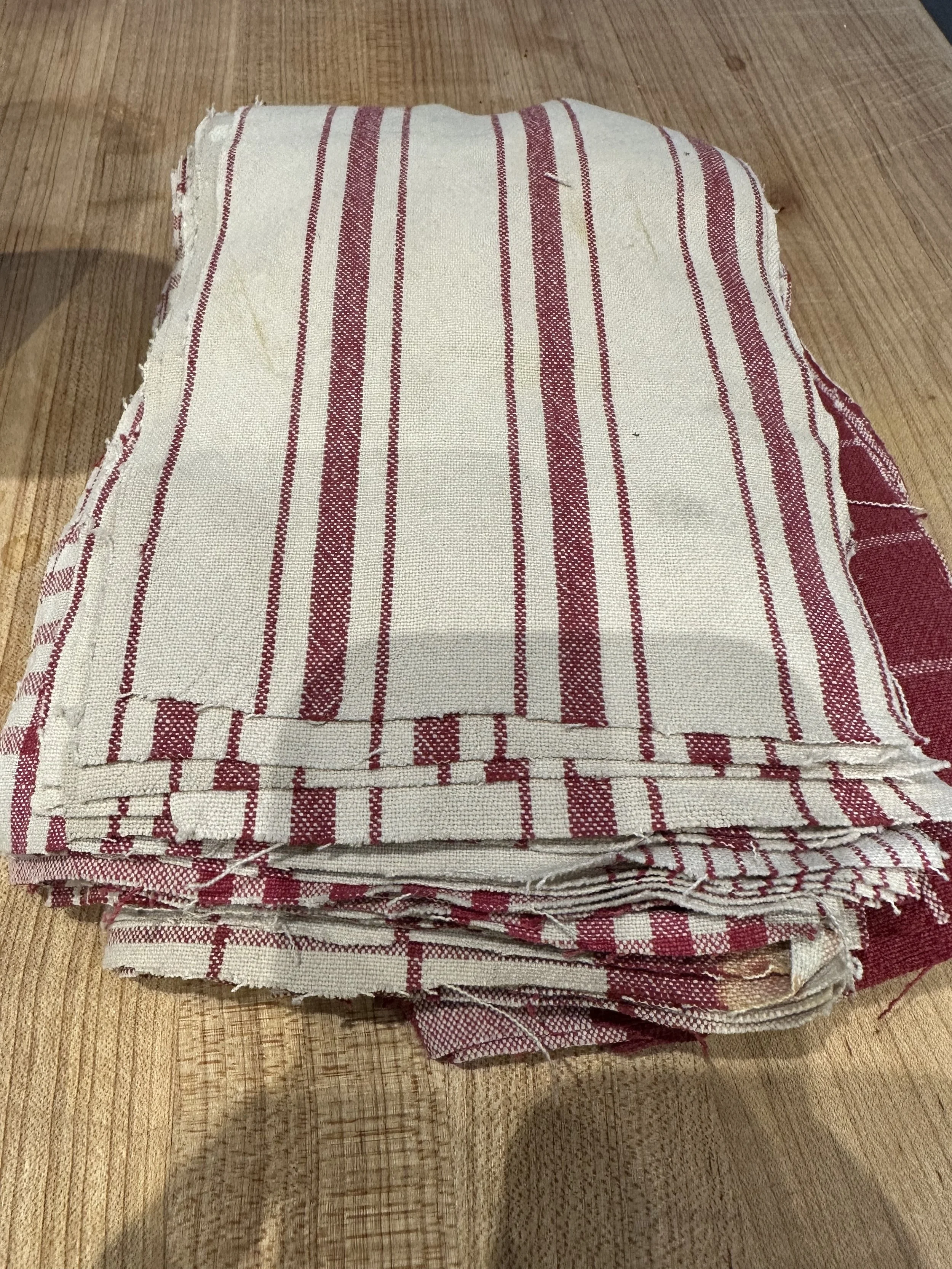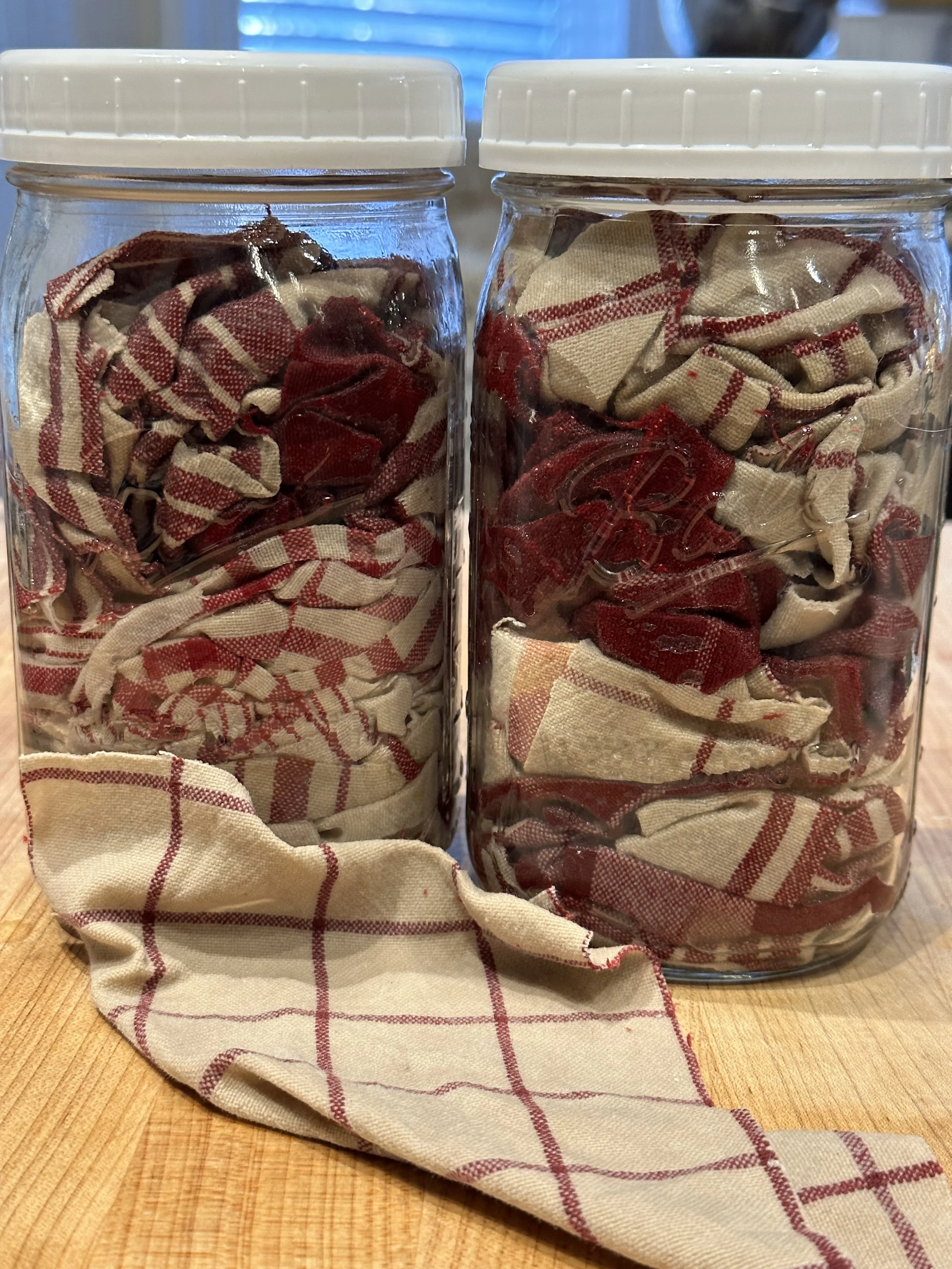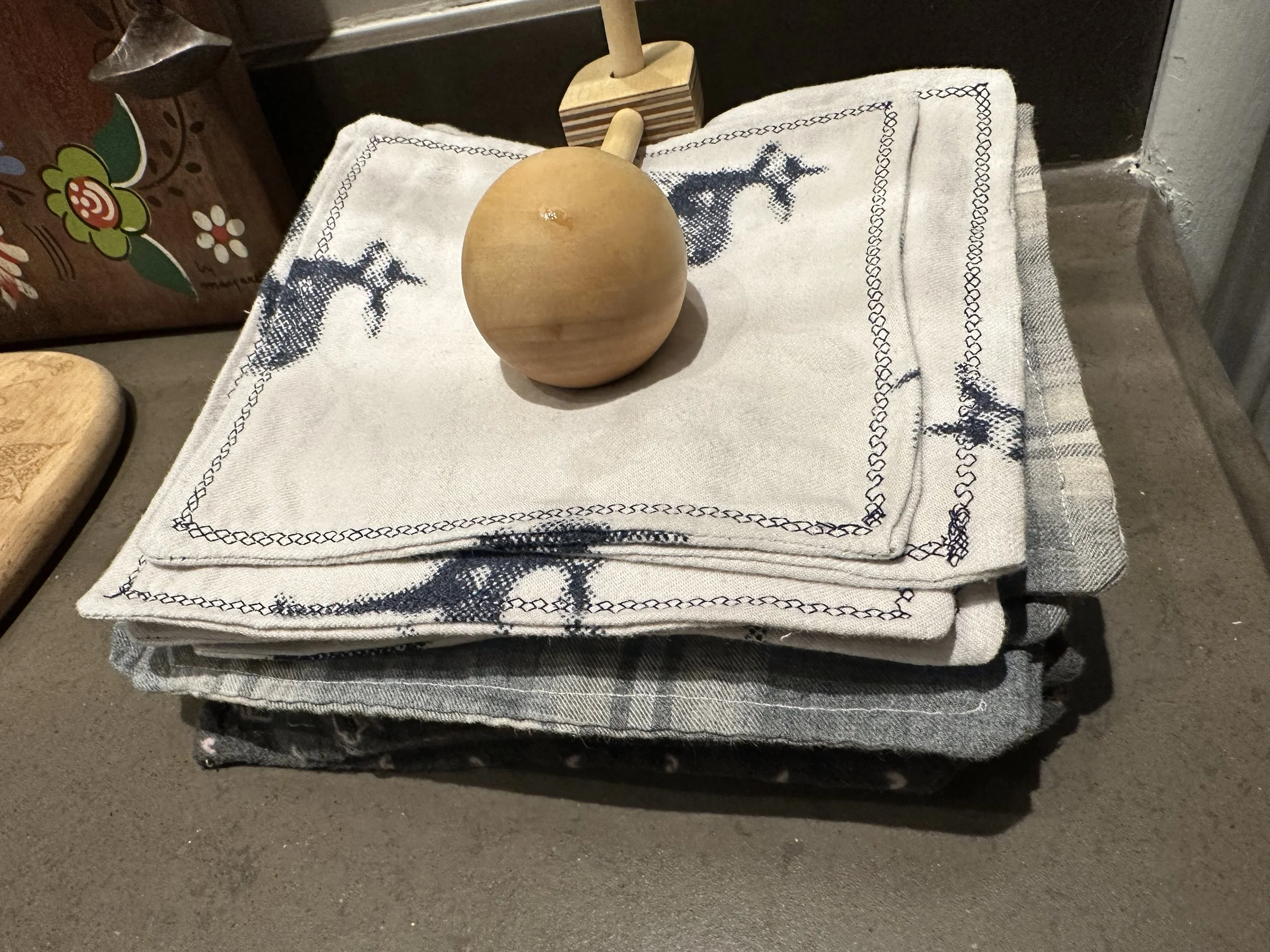Riches to rags
This post is going to be about a very humble article within our or any household - the rag. More specifically, the defancification of the rag in my kitchen.
When I was in grad school and setting up an adult apartment for the first time, Target had really just begun their now decades-long (and very successful) experiment in selling cleaning chic.
I remember the first time I saw a kitchen scrubber designed by Michael Graves. Imagine saving up to buy a kitchen scrubber? But that’s what I did; I couldn’t afford the coffee pot. It was extra special to me because I just started graduate school at Emory University and Michael Graves designed the Michael C. Carlos museum at Emory, which is a nice little museum. If you’re ever in Atlanta, you can go there. Yes, the coffee pot designer was an actual architect.
At that time it seemed like buying fancy cleaning materials was a very high class thing to do. I can still smell the different scents of Myers cleaning products. I loved the retro labels; they really looked nice in my 1960s apartment. And having attractive new brightly colored cleaning cloths gave me just a little hit of dopamine. Something about the intersection of virtuous, productive, and stylish was irresistible. For years I took any excuse to buy fresh and attractive new dish towels, dish cloths, and scrubbers.
It wasn’t until about 10 years later that I began to think these practices were not the most desirable. For one thing because I spent good money on these fancy cleaning cloths, I wanted to keep them nice. Which meant that for anything truly messy, I used disposable wipes. I had a canister of disinfecting wipes in every room of the house, and of course paper towels.
But the precipitating factor was not concern about sustainability. I started to have unpleasant reactions to the preservatives in some kinds of wipes. In my efforts to not spend all day with rashes all over my hands, I had tried to find some options with more tolerable ingredients. I won’t say less harsh because the ingredients are still harsh - they’re disinfectants - but the point was they weren’t things my particular skin happens to be sensitive to.
After doing a little bit of research, I figured out that plain ol’ rubbing alcohol was probably the best option. By that time alcohol gels for hand sanitization had become common. And of course, alcohol is among the things they clean hospitals with. So I started my experimentation by using rubbing alcohol.
First, I needed to figure out the right dilution. At that time I used to do half-and-half - half 97% isopropyl alcohol, half distilled water. That’s what I used for quite a long time, but I will note that with the Covid pandemic, the CDC released guidelines for the proper dilution of isopropyl alcohol for sanitation purposes. It should be no less than about 66%; I currently dilute at 2/3 alcohol to 1/3 distilled water.
Now, the alcohol and water are really the only things that you need. But I figured out that the wipes worked better for cleaning when they had a little bit of soap in them. I also like including essential oils. My favorites are tea-tree or citrus-based scents. You may recall from your childhood science classes – or from just being alive - that oil and water don’t mix. You can’t put essential oils directly into your alcohol and water solution and expect them to mix. But soap is essentially an emulsion between fatty acids and water. So a small amount of dish soap will allow essential oils to be mixed into it. Then you can dissolve the entire bit of soap into the alcohol and then cut with water.
When I first tried this recipe, I didn’t have rags lying around to use for it. I had to figure out what I was going to use. I thought about what properties would be important in the cloth for a reusable cleaning wipe. This type of wipe shouldn’t be too absorbent. You want it to spread a thin layer of the cleaning solution on the surface that you’re disinfecting. So it should be able to soak up the cleaning solution, but still be able to deposit it on the surface. I decided that a woven texture would be better than a knit or terry.
As I was casting about for what to use, I realized that I did have some (fancy) dish towels that had developed holes. A couple others had been badly stained when a roommate decided to sop up spilled coffee with my fancy white dish towels. What better way to keep their pretty patterns around and make extra good use of the investment in my fancy dish towels than to give them a second life as disinfect wipes?!
The way I did that was to first cut off the sewn hems and then cut the remaining cloth into equal sized pieces - usually six. With woven cloth I have never found I needed to hem the rags I cut from the dish cloths. Sometimes some threads will pull off the sides, especially when washing; be sure not to wash them with anything sticky like terry cloth or fleece. In fact, I recommend washing them in a load together with nothing else if you happen to think about it, but I don’t usually. Think of it, that is. Eventually (usually after the first wash) they won’t release any more strings.
Sometimes DIY options like this are sold as being cheaper; sometimes they even are! But disposable wipes are cheap. You might spend about 25% less on the alcohol, so if you already have dishcloths or something else to use for the fabric as well as the jars laying around, you may save some money. It’s also not plastic free to make since alcohol is sold in plastic bottles. But one large bottle of rubbing alcohol can make four canisters worth of wipes. And the disposable wipes often contain polyester (plastic).
So it cuts down quite a bit on the plastic waste, even if it doesn’t omit it completely. I personally feel better about the ingredients - as do my hands.
I use the proportions as follows:
1/2 tablespoon dish soap of choice
2-3 drops essential oil
2 cups, 97 or 99% isopropyl alcohol
1 cup filtered or distilled water
I recommend mixing this amount in a quart mason jar, then dividing it into two jars. You can then stuff the jars full of whatever rags you happen to have lying around.
More recently, I expanded my rag repertoire. For Christmas Diem got me a sewing machine. It’s been a while since I’ve used a sewing machine with any regularity and I figured a good project to remind myself how they work would be to make some reusable paper towels.
These are all made from the legs of flannel pajamas that for whatever reason I couldn’t wear anymore; either they’d gotten too small or the waistband had worn out. I like flannel for this because it’s slightly absorbent and very soft. I use these in place of table napkins as often as to wipe the counters down.
I cut each leg into squares and cut with the leg laid out flat so that there were two layers to each square that I cut, but no seems. In retrospect, it would have been easier to turn the pajama bottoms inside out before cutting but I didn’t think to do that so I had to re-position each pair so that the right sides were facing in. I then sewed them around the edges with a half-inch seam allowance and about a 1 inch space for turning inside out. After I turn the right side out a top stitched all the way around the edges for the first few I just did a plain topstitch and then after that I got fancy.
Since these are reusable, it’s important to wash them carefully. I either throw them in with the bedding that will be washed and hot or add a sanitizing solution to the wash cycle.
I also keep canisters full of pieces of cut up T-shirts around. I’m not much of a big T-shirt wearer, but my husband is. Periodically I convince him to let me turn the most egregious of his T-shirts into rags. I like those for things that are a bit messier. If it gets too messy, I can throw it away or I can throw it in with a bleach cycle. You’re also really good for cleaning glass and stainless steel or really anything else that needs to be shiny without leaving a lot of lint behind.
I hope this is giving you awesome ideas for how you can keep your cleaning supplies stocked in a somewhat more sustainable way, while also giving you something to do with fabric items that are difficult to donate or reuse.





